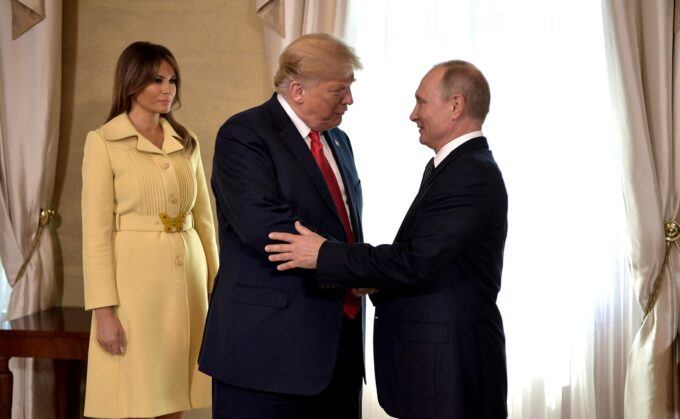Hegseth’s Attacks on Black Troops Evoke Long History of Anti-Racist Struggle
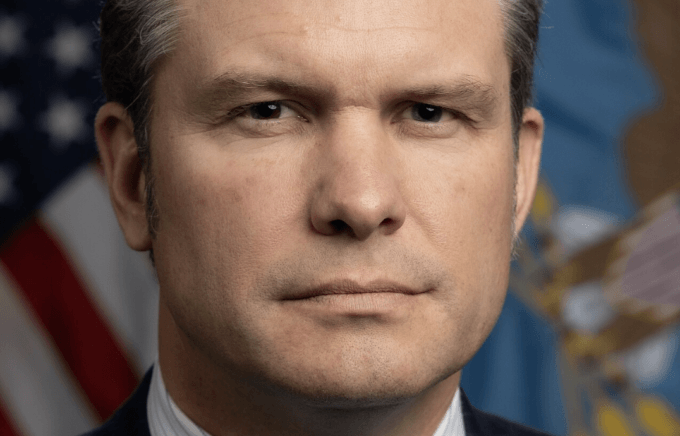
Peter Hegseth, Image via Wikipedia
Peter Hegseth is charging forward on the promise to De-Woke The Military, codified in Trump’s executive order to purge “DEI” from the ranks. Among their targets are Black soldiers, who have been a center–and many times a catalyst–of the broader anti-racist struggle for well over a century.
Some of Hegseth’s orders so far have left little doubt that “DEI” is a code word:
*Banning all Black History Month activities and recognitions the day before it began (while notably allowing military-wide St. Patrick’s Day celebrations)
*Firing African American “DEI General” CQ Brown from Chairman of the Joint Chiefs, after lamenting how “our generals are hunting for racists in our ranks that they know do not exist” (they do)
*Banning Black student groups at military academies
*Bringing back the name “Fort Bragg” to the recently renamed Army post that had honored a Confederate general
*Ordering recruiters to stop attending the Black Engineer of the Year Awards, which one recruiter described as the “most talent-dense event we do”
It has gotten a bit more overt, deleting from the DoD website their only “Medal of Honor Monday” profile of a Black soldier given the award. A slip in the new URL code laid bare the new attitude: three letters were added so the web path would read “DEI Medal of Honor…”
DEI policies did not exist during the Vietnam War; in fact it was much harder for Black soldiers to get recognition. Charles Rogers–who won the award as he was wounded three different times leading a doomed defense of his outpost–was marked “DEI” simply because he was Black.
But the latest stuck out to me as the real shock.
On March 13, Hegseth ordered a review of military standards; and specifically, of beards.
This will likely elude non-veterans but every vet will know that this primarily impacts Black troops, who are commonly exempt from standard shaving requirements due to a skin condition (pseudofolliculitis barbae) which afflicts 45% of Black servicemen.
In other words, Hegseth has found a way to potentially purge thousands of Black servicemen. The Marine Corps has already announced they would do so. The other branches will decide soon.
Hegseth has a very public rationale for all these measures: it is actually about promoting unity! Increasing cohesion by emphasizing what we have in common!
The hallmark of this cohort has been “don’t believe your eyes.” But we all can see what this is.
We’re expected to ignore the context: that Hegseth is deep in a Christian nationalist community led by far-right theologian Doug Wilson, who wrote an entire book defending slavery in the American South. Hegseth bears tattoos associated with white supremacists. He has a long history of rhetoric clearly tapped into the far-right internet ecosphere, dominated by anti-Black content. Hegseth even took known neo-Nazi collaborator Jack Posobiec along with him on his first international trip as Secretary of Defense.
His reforms are not exactly popular in the armed forces, either, nor do they have a significant base among military leadership or academia. They stem primarily from white nationalist attitudes, obsessed with “Critical Race Theory” and now the updated term “DEI.” Their fantasies of purging Black soldiers trace back 160 years.
Black Troops Become the Nucleus of the Freedom Struggle
One of the earliest civil rights struggles in America revolved around Black soldiers.
First it was a struggle for African Americans to have the right to join the Union Army. Many died in those first units just to prove their worth, finally winning federal authorization of Black recruitment.
As predicted by Fredrick Douglass, their heroism in the Civil War would be key to advancing their cause for equality in the North. Once in the military, Black troops waged campaigns (and even mutinies) throughout the war against racist officers and unequal pay, which electrified the freedom struggle everywhere.
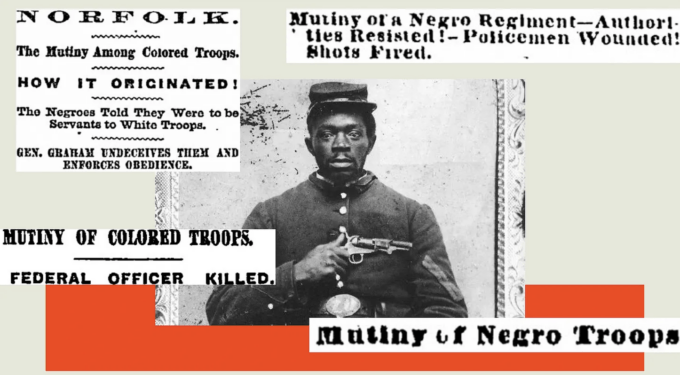
The Confederates, of course, would never allow Black men in the rebel uniform. But they could not accept Black men in any uniform. It drove them insane.
They instituted a policy of executing Black POWs, ignoring the decorum afforded to white POWs. Many massacres of Black troops line the war’s history; at Fort Pillow, around 200 Black soldiers who had surrendered were executed. “Remember Fort Pillow” became a rallying cry across the country, with many wearing the slogan pinned to their uniforms while they defeated their former enslavers in battle.
The Confederates would continue to be driven insane as those Black soldiers became their overseers. Black infantrymen occupied southern towns and cities after the war to keep the defeated in check and to carry out the project of Radical Reconstruction. Considering the way the world looked less than a decade prior, it was truly an unimaginable scenario.
Despite intense racism inside the armed forces, and it’s often totally unjustifiable missions, many in the Black Freedom movement saw military service as a way to challenge racist tropes about Black intelligence and humanity through unquestionable bravery.
Black soldiers also often put their training, guns, and the authority of their uniforms to use in challenging Jim Crow racism, including significant uprisings by garrisoned soldiers in cities like Tampa (1898), Houston (1917), and beyond.
Black infantry units in WWI also earned high prestige for bravery, such as the Harlem Hellfighters. More importantly, they returned to the racist US as skilled, battle-tested combatants. During the wave of white violence in Red Summer of 1919, Black WWI veterans were both the targets of mob violence, and the backbone of defense in battlegrounds like Tulsa. In Washington D.C., Black snipers atop the Howard Theater successfully held off the advance of lynch mobs.
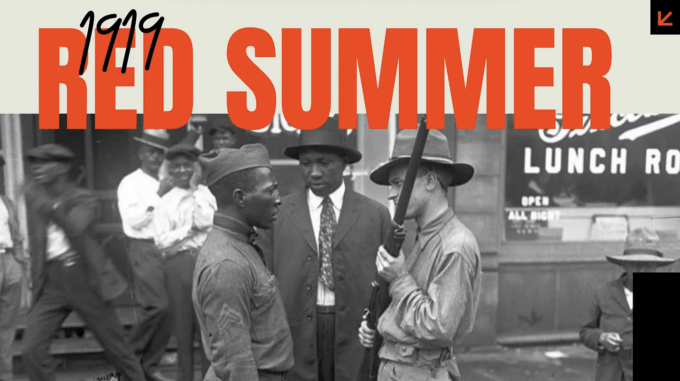
White militiaman confronts Black soldier in Chicago
Preceding Red Summer was the lynching of WWI veteran Wilbur Little, murdered for refusing to take off his Army uniform. At least 16 veterans would be lynched that year.
They were targeted because Black men with guns was an outrage, even symbolically, since what they did with those weapons actually advanced the reputation and esteem of the Black community. And it was a practical barrier against white violence.
Their ability to achieve that status and expertise was gradually eroded. Increasingly kept out of combat arms and leadership roles, they were pushed into dirty work like shoveling coal, digging ditches and working the kitchens.
This rise of Jim Crow turned the military itself into an arena of struggle.
In 1940, 15 Black sailors aboard the USS Philadelphia publicly signed a letter detailing racial discrimination and abuse. After it was published in a newspaper, all were kicked out of the Navy and the struggle for the rights of “The Philadelphia 15” became a rallying cause for the NAACP, socialist parties and others.
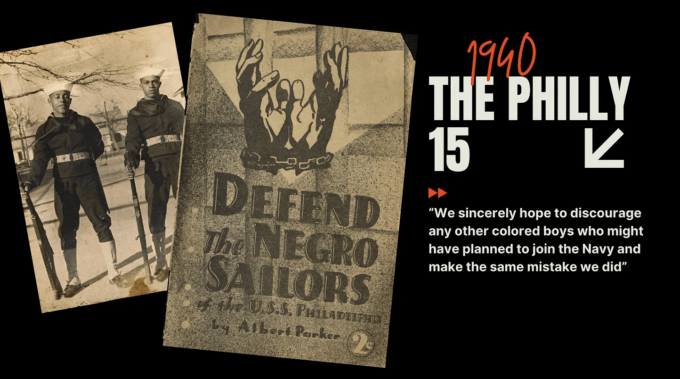
Pamphlet distributed by the Socialist Workers Party, 1940
Through World War II, the Black struggle launched the Double V campaign (Victory Abroad, Victory At Home) which demanded: if Black men and women could fight for freedom abroad, they deserve freedom in the United States.
Black soldiers and sailors were known to carve the Double V symbol onto their chests. It is considered an opening salvo of the Civil Rights movement.
Mass rallies began demanding the desegregation of the military. Various organizations were formed: Committee to End Segregation in the Armed Forces; the League for Non-Violent Civil Disobedience Against Military Segregation and more. With the help of W.E.B. DuBois, they joined into coalition under the name Committee Against Jim Crow in Military Service.
Inside the military, an even hotter struggle was waging. In 1942, 600 Black troops stationed in Australia mutinied, taking over the base and killing racist officers.
The 1944 Port Chicago disaster left around 300 Black sailors dead from loading ammunition under unsafe, overworked conditions by white officers. It led to the largest mutiny in US Navy history. The trial for 50 Black sailors who led the strike became a nationwide campaign for their exoneration.
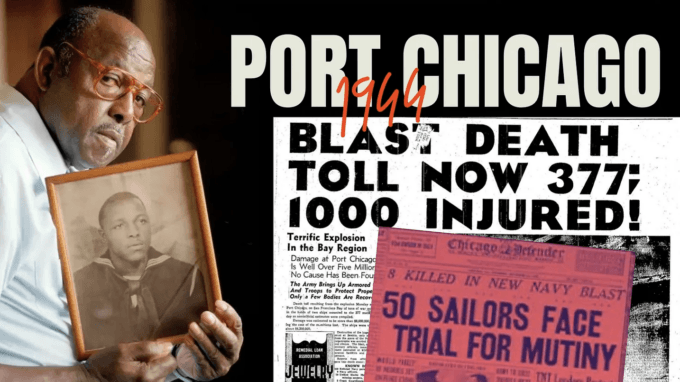
The following year, over 1000 Black sailors went on hunger strike over the policy of only promoting whites.
The demands for equality within the ranks claimed victory with a 1948 Executive Order by Truman, officially desegregating the armed forces.
This became an important part of the framework for civil rights legislation more broadly–not just on paper, but in the movement, as the victory of the military desegregation movement pushed forward equality in all areas of life. On its heels was the Brown v. Board of Education victory, and later the Civil Rights and Voting Rights Acts.
Into Our Era
Over the next 70 years, the military would remain relevant to the anti-racist struggle nationwide. From mutinies during Vietnam to police violence against Black service members in today’s era, it has remained a trigger point.
The new direction of the DoD, under the leadership of obvious racists, sets the stage for a revival.
The 2020 nationwide rebellion against racism was quelled with repression from Trump and lies from Democrats. Those tensions remain very real and unresolved, simmering beneath the surface.
The racist agenda of the Trump Administration, in all aspects of American life, are creating sparks that could catch at any moment. His military agenda is one of those sparks.
Their attitudes flow directly from that of the Confederacy. By that same measure we can reach back into history to draw on the lessons of Black service members, and how they gave momentum and strength to the broader anti-racist struggle.
This piece first appeared on Empire Files.

